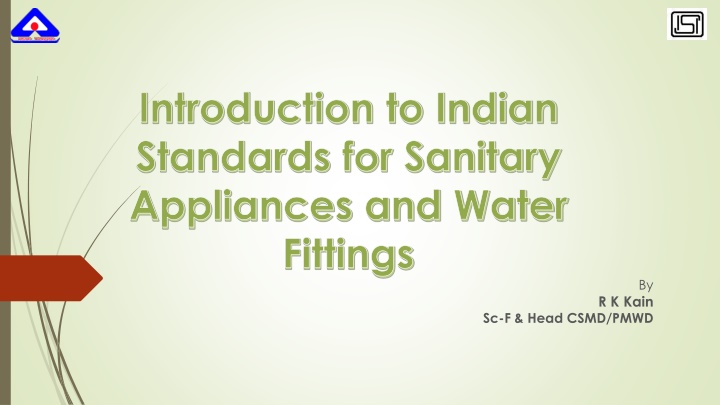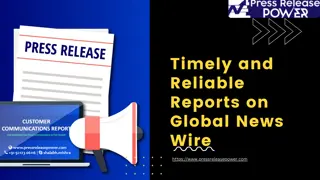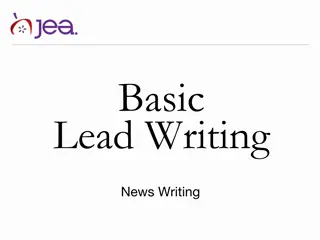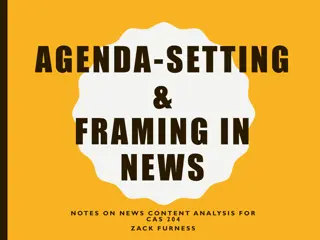
Indian Standards for Sanitary Appliances and Water Fittings Overview
Learn about the importance of standardization in the field of sanitary appliances and water fittings, including the benefits it offers. Explore the NBC 2016 regulations for plumbing and drainage systems in buildings according to the National Building Code.
Download Presentation

Please find below an Image/Link to download the presentation.
The content on the website is provided AS IS for your information and personal use only. It may not be sold, licensed, or shared on other websites without obtaining consent from the author. If you encounter any issues during the download, it is possible that the publisher has removed the file from their server.
You are allowed to download the files provided on this website for personal or commercial use, subject to the condition that they are used lawfully. All files are the property of their respective owners.
The content on the website is provided AS IS for your information and personal use only. It may not be sold, licensed, or shared on other websites without obtaining consent from the author.
E N D
Presentation Transcript
Introduction to Indian Standards for Sanitary Appliances and Water Fittings By R K Kain Sc-F & Head CSMD/PMWD
STANDARDIZATION Standardization is the process of implementing and developing technical standards based on the consensus of different parties that include firms, users, interest groups, standards organizations and governments. Standardization can help maximize compatibility, interoperability, safety, repeatability, or quality. It can also facilitate a normalization of formerly custom processes.
Major Benefits of Standardization Improvement in universal technical communication and mutual understanding; Facilitation of international exchange of goods and services; Removal of technical barriers to trade; Transfer of technology. Uniform terminology is created Sizes and dimensions are co-ordinated and adapted Variety is reduced Function requirements and characteristics are specified Unambiguous testing methods are established
Other Benefits also include Economic benefits Technical Benefits Social benefits Political benefits Management benefits
NBC 2016 (Part-9) - Plumbing Services Plumbing Systems -The plumbing systems include: a) water supply and distributing pipes from a public water system or a private water system or a private water supply system from a bore well or other source, b) plumbing fixtures for the use in water supply as well as the collection and disposal of used waters, sanitary drainage system to carry the wastes from the plumbing fixtures to the public or private disposal system, c) Anti-siphonage system which carry only the air for the purpose of ventilation and preventing the failure of the water seals in traps thereby preventing the entry of foul air from the public or private drainage system into the building, and d) Storm water drainage system to collect and carry rain water or water not used by occupants of the building to a public storm water drain or to a local garden or a pond.
NBC 2016 (Part-9) Plumbing Services Drainage and sanitation requirements of buildings-Section 2 Part 9/Section 2 of National Building Code (NBC) 2016 covers the drainage and sanitation requirements of buildings, design, layout, construction and maintenance of drains inside buildings and from the buildings up to the connection to public sewer, private sewer, individual sewage disposal system, cesspool, or to other approved point of disposal/treatment work. It also covers drainage systems peculiar to high altitudes and/or sub-zero temperature regions of the country Scope Terminology Definitions relating to Sanitation and Drainage Basic Principles Drainage and Sanitation Licensing/Registration of Plumbers Types of Sanitary Appliances Drainage and Sanitation Requirements Materials, Fittings and Appliances Preliminary Data for Design Planning and Design Considerations Construction Relating to Conveyance of Sanitary Wastes Construction Relating to Conveyance of Rain or Storm Water Selection and Installation of Sanitary Appliances Refuse Chute System Inspection and Testing Maintenance Pumping of Sewage Sewage Treatment Systems Treatment of Waste Water and Usage of Recycled Waste
Sanitary Appliances and their Specifications Sanitary appliances are fittings used for collection and discharge of soil or waste matter. These appliances may be grouped under soil appliances and waste water appliances. Soil appliances are used for collection and discharge of excreta matter including water closet, urinal etc. A sanitary appliance for the collection and discharge of excretory matter is called a soil appliance. A sanitary appliance for the collection and discharge of, water after use for ablutionary, culinary and other domestic purposes, is called a waste appliance. The soil appliances are the several kinds of water-closets, urinals, bidets and slop sinks. The waste appliances are drinking fountains, wash basins, kitchen sinks, laboratory sinks and bath tubs. BIS has published Special Publication, SP 35 as The Handbook on Water Supply and Drainage with Special Emphasis on Plumbing, which is one of the handbooks in the series, deals with the design, construction, maintenance, etc. of all water supply systems and waste water disposal systems with special reference to water supply systems within the premises and waste water collection. transportation and disposal from domestic sanitary appliances. It gives details for design of small individual disposal systems and broad outlines for the design of large scale transportation, treatment and disposal systems for sewage. It forms compendium of all Indian Standards related to water supply & drainage system at one place.
Design and Construction of Sanitary Appliances 1. Durable (long lasting). 2. Impervious to water (it must not absorb water). 3. Resistant to corrosion (in order to make it long lasting and to be hygienic). 4. Simple in outline (so that there will be no crannies to hold dirt). 5. Smooth surfaced inside and out (for ease of cleaning and to be largely self cleansing internally as flushed in use). 6. With the inside so designed that the water will drain naturally to the outlet.
General Specifications of Sanitary Ware At the time of purchase it should be checked that all exposed surface of sanitary ware is coated with an impervious non crazing, vitreous, glaze finish which is thoroughly fused with body and should possess an impervious surface. The glaze finished on sanitary ware is generally white but it may be finished in glaze of any color. It should have high gloss. The glaze should be of such thickness as gives uniform color and finish to surface. Its surface should not have wavy finish, warpage, discoloration, blisters or pinholes, bubbles etc. and these should not be visible to naked eye. Connecting dimensions should be standardized to ensure interchangeability. Functional dimension should be such that it is performance oriented and not prescriptive, means provide tolerances on shapes & dimensions. Keeping in view above mentioned quality aspects for selection of sanitary wares the Indian Standard IS 2556 series are published by BIS.
General Specification. IS 2556 (Part-1) provides general requirements relating to material, manufacture, quality, dimensional tolerances and performance requirements as applicable to all concerned vitreous China sanitary appliances, and also details the methods of test by which their properties may be assessed. This Standard lays down acceptable criteria to general requirements common to all types of vitreous China sanitary appliances, such as: Materials & Manufacture Glazing, permissible blemishes & Defects Minimum Thickness & Tolerances in dimensions Performance requirements like Warpage, Crazing, Water absorption, Modulus of rupture (MOR), Chemical resistance, Resistance to staining & Burning, etc For example Modulus of rupture, it is an important property which signifies strength of any ceramic ware. It is the resistance of a ceramic bar to breaking (flexural Strength) when supported on two points and subjected to an increasing force at its midpoint. The average modulus of rupture of ten samples when tested by the method described in 10.4 of IS 2556, Part-1 shall not be less than 60 Mpa. Similarly, IS 2556 Part-1 lays down the permissible value for all quality parameters below which any sanitary appliance will be sub-standard and cannot be ISI marked.
PLUMBING SYSTEM IN BUILDINGS Plumbing, in general, refers to the system as well as the material fixtures and the apparatus used inside a building for supplying water, removing the used water with other liquid and water-borne wastes as also the connected ventilating system. In practice, it also includes the system of storm water or roof drainage and exterior system components connecting to a source, such as a public or a private water system or a point of disposal of waste or used water, a public sewer system or an individual disposal system, namely, a domestic septic tank with arrangement for disposal of its effluent through a leaching cesspool or a collecting well with arrangements for removal of its contents by means of a vacuum car. The plumbing system consists of the entire system of piping, fixtures and appliances used for water supply and drainage. The plumbing water supply system consists of water supply and distribution pipes, taps, valves, storage tanks etc., while plumbing drainage system consists of wash basins, water closets, urinals, traps, soil waste pipes, vent pipes, septic tanks etc.
Water-Closets (WC) A water-closet consists of: (a) the closet proper consisting of the basin and the trap, and (b) the flushing apparatus. The following varieties of water-closets are in common use. i. The squatting or the Indian type Squatting pans shall be made in any one of the following patterns and sizes. Pattern Sizes in mm Long pan 580 and 630 Orissa 580 X 440 and 630 X 450 Rural 425 Integrated 500 IS : 2556 (Part 3)-1981 deals with the specific requirements of squatting pans and traps made of vitreous china. IS : 2556 (Part 14)-1974 deals with specific requirements of integrated squatting pans
WC- The squatting or the Indian type In India people use the closet in a squatting posture and therefore the seat arrangement is modified to have two foot rests on either side of the pan proper, the pan with the trap being placed flush with the floor of the closet apartment. The floor and the foot rests may be made with cement concrete. Separate squatting plates made of vitreous china may be fixed on the floor and finished with cement mortar. The pan and foot rests may be made integral in vitreous china as in the case of Orissa pattern and in the case of universal pattern of closet pans. The pan may have a flushing rim and connected to a flushing apparatus. In the case of the hand pour flushed type, as in the case of the rural pattern, there is no flushing rim.
WC - Washdown type (Western Style) ii. Washdown water-closet (WC)- Washdown water-closets shall be one of the following patterns: a) Pattern I - Height 390 mm front and rear b) Pattern 2 - Height 390 mm front and rear This is also called the European water-closet and is used in a sitting posture over a wooden or plastic seat hinged to the closet structure. Another wooden or plastic cover is also hinged to close the pan from view. The closet is a pedestal fitting with basin and trap in one piece. The pan consists of a short inverted cone, the back of which is almost vertical so that the excreta may fall directly on the water in the trap without fouling the sides. It is always provided with a flushing rim and attached to a flushing apparatus which is usually a low level flushing cistern. It has an efficient water seal, small water content but large water area every sense a self-cleansing fitting. A washdown fitting, but without the designed to be built into and supported and is in pedestal, from the wall is called a washdown closet with corbel or bracket fitting. Being free of the floor, with the space below visible and accessible for cleaning, this fitting is particularly suitable for institutional and factory use. When not in use, the seat and the cover are folded back and the closet used as a urinal. wall is called a washdown closet with corbel or bracket fitting. Being free of the floor, with the space below visible and accessible for cleaning, this fitting is particularly suitable for institutional and factory use. When not in use, the seat and the cover are folded back and the closet used as a urinal. Water-closets shall be of one piece construction. Each water-closet shall be provided with two floor fixing holes having a minimum diameter of 6.5 mm and shall have an integral flushing rim of the box or open type. It shall have an inlet or supply horn for connecting the flushing pipe. The flushing rim and the inlet shall be of the self-draining type and a weep hole shall be provided at the flushing inlet of the water-closet. Each water-closet shall have an integral trap with either P or S outlet conforming to Fig. 24 or Fig. 25. For P trap, the slope of outlet shall be 14 . Where required by the sanitation authority having jurisdiction over the area of installation, each water-closet shall have anti-siphonage vent horn on the outlet side of the trap as per details given in Fig. 26. The water-closets shall satisfy the requirements of the tests given in IS : 2556 (Part 2)-1973. There are two patterns, namely, the single trap and the double trap patterns with S or P trap.
WC - Washdown type (Western Style) In the single trap pattern with S trap, the inlet from the trap is first enlarged and then somewhat suddenly contracted. The effect of this is to cause the discharge from the basin to mix with the air in the outlet and carry some of it away in its flow. Then, while the pressure of the atmosphere remains normal in the inlet, it is subnormal in the outlet and the atmosphere simply pushes the contents of the basin. In the double trap pattern, the first trap being an S one and the second trap being a P one. In this pattern the space between the two traps is closed save for a small pipe which is connected to an injector in the flushing pipe immediately below the cistern. The action is simple and very effective. Immediately the flushing cistern is operated, water passing at a high rate of speed down the flushing pipe acting on the injector rarifies the air contained in the space between the two traps with the result that the full pressure of the atmosphere on the exposed water in the basin is not adequately resisted and movement is inevitable. The action is so efficient that the contents of the basin may actually begin to move out before the first flushing water reaches it. Utilization of the pressure of the atmosphere permits the use of water seals of greater depth in siphonic closets than is practicable in fittings which depend entirely upon the flushing power of water delivered from an ordinary flushing cistern. IS : 2556 (Part 8)-1973 lays down the specific requirements of siphonic washdown water- closets of vitreous china for the two patterns. The depth of seal for single trap and for each seal in the case of double trap shall not be less than 50 mm. The flushing cistern shall be of low level type and shall conform to the requirements specified in IS : 774-1971 except that there will be no separate flush pipe and the discharge capacity of cistern shall be not less than IO litres.
Wash Basins Before the advent of indoor plumbing, basin and pitcher sets provided a way for people to wash their faces and brush their teeth in the bedroom or bathroom. Wash Basins are type of sink which are fixed in bathrooms/bed rooms/dinning rooms/hand washing places for washing of face, hands, brushing of teeth, shaving, etc Various Types of Washbasins Counter Top Washbasin Full Pedestal Washbasin Half Pedestal Washbasin Wall-Mounted Washbasin: Corner Washbasin Under-Mount Washbasin IS 2556 Part-4 specifies requirements of wash basins covers the requirements, patterns and sizes, dimensions and tolerances, construction, finish, fixing arrangements for vitreous wash basins.
Wash Basin Construction specification The wash basin shall be of one piece construction with/without combined overflow and soap holder(s). All internal angles shall be such as to facilitate easy cleaning. Wash basin for use in surgeon's room and operation theatre shall not be provided with soap holder recess and combined overflow. Wash basins shall be provided with five, three, two or single tap hole, round in shape and symmetrical about the centre line of the basin and either fully punched or semi-punched. The tap holes shall be suitable for fixing pillar taps conforming to IS 1795 or to IS 8931. The level of the top of the platform which accommodates the taps shall not be below the spillover level of the basin irrespective of the overflow arrangement. For angle back basin, provision shall be made for one or two tap holes in any suitable position in accordance with the design of the manufacturer. Each basin shall have a circular waste hole of dimension as per the details given in 5.2.4. The waste hole shall accommodate a waste fitting having a flange diameter of 64 mm (see IS 2963). Any provision to receive the brackets on the underside of the wash basin shall be capable for receiving a bracket stud (see IS 775) not exceeding 13 mm in diameter,8 mm high and 305 mm from the back of the basin to the centre of the stud. Horizontal distance between two stud provisions shall be A-50 mrn, where A is length in mm of wash basin. For flat back wash basins of size up to 450 mm x 300 mm and of angle back wash basins of size up to 400 mm x 400 mm, screw-fixing holes (minimum two) shall be provided at a suitable distance and location. The screwing hole diameter shall be 6.5 mm minimum. Additional/alternate provision for fixing the wash basin on rag bolts may be provided at the back of the basin and shall not be visible from outside when installed in its normal position. The rag bolt holes shall be of dimensions given in Table 6, suitable for a minimum M8 size bolt. An overflow slot, if provided, shall have a horizontal dimension not larger than 64 mm and an area not less than 500 mm2 A round overflow of the same area can be an alternate design. The wash basins shall be installed in a stand with a pop up waste fitting. The rate of water supply shall be adjusted to 9.5I1min. The waste outlet shall be closed. The elapsed time from the onset of water flowing into the overflow of opening until the water begins to overflow the flood level shall be measured. The fixture shall drain for 5 min without overflowing. The soap recess(es) shall have adequate provision for draining into the bowl. The wall hung wash basins of 500 mm and above length shall be installed on rag bolts or brackets. A load of 110 ~ gkg or a force of 1.1 : 8.05 kN shall be applied for a period of 1 h by placing it on a wooden beam with a cross-section of 100 mm x 100 mm positioned across the centre of the opening of the top surface of the wash basin. No damage or defect shall occur to the wash basin and the fastenings. The chain stay hole, where provided shall be 10mm diameter and shall be completely above the level of the top of the overflow hole/slot. Glazed pedestals for wash basins, if required by the purchaser, shall be supplied. The quality and thickness of the ware and the quality of the glaze of the pedestals shall not be less than that of the basins with which it is to be installed. They shall be suitably recessed at the back for the reception of supply and waste pipe and fittings. They shall be so constructed as to support the basins rigidly and adequately and shall be so designed as to make the height from the floor to top of the rim of basin between 750 to 850 mm Finish - Inside surface of wash basins shall be glazed uniform and smooth in order to ensure efficient draining.
Main References National Building Code of India (NBC) 2016, Section-9 SP 35:1987 - Handbook on Water Supply and Drainage. IS 2556 series of Standards for ceramic sanitary appliances IS 774 for flushing cisterns IS 1742 : 1983 - Code of practice for building drainage (second revision) -IS 4111 (Part 1) : 1986 - Code of practice for ancillary structures in sewage system: Part 1 Manholes (first revision) IS 5329 : 1983 - Code of practice for sanitary pipe work above ground for buildings (first revision) IS 6295 : 1986 - Code of practice for water supply and drainage in high altitudes and or sub-zero temperature regions (first revision) International Plumbing Code 2015, International Code Council, and Uniform Plumbing Code 2015, International Association of Plumbing and Mechanical Officials
Updates in NBC 2016 on Plumbing services 1) Various tables on the requirements for fitments for drainage and sanitation for various occupancies have been updated, and a new table for shopping malls and retail buildings has been included. 2) Enabling provisions for use of corrugated pipes, low noise pipes and under slung pipes have been included. 3) Information about bio-toilets has been added. 4) Typical mounting arrangements for various plumbing fixtures, including drainage systems and ventilation have been illustrated. 5) A new table for calculation of single stack sizing has been included. 6) Various additional requirements relating to layout of drainage and sanitation system have been added. 7) Venting system for high rise buildings, along with a comprehensive table on size and developed length of stack vents and vent stacks, has been included. 8) General provisions on design of drainage pipes have been elaborated. 9) Provisions relating to gradients of drainage pipes have been elaborated. 10) The table on fixture unit for different types of fixtures has been updated. 11) The tables on maximum number of fixture units that can be connected to branches and stacks, and to building drains and sewers, have been updated. 12) New provisions on design requirement for high rise buildings drainage system have been included. 13) The minimum diameter for floor drains outlets before connecting to floor trap has been included. 14) Provisions related to manhole covers and recommended locations have been included. 15) Provision for estimation of storm water runoff and coefficient of runoff for various surfaces have been included. 16) The table on sizing of rainwater pipes for roof drainage has been updated. 17) The illustration on artificial ground water recharge structure has been detailed. 18) Guidelines relating to siphonic drainage system for large roofs have been included. 19) Provisions on rainwater harvesting for plotted/group housing developments and deep well/bore well recharging, have been included. 20) Clarifications and recommendations on use of septic tanks have been made. 21) New provisions related to pumping and treatment of sewage have been included. 22) A provision on treatment of waste water and usage of recycled water has been included through cross- reference to Section 1 .Water supply. of this Part of the Code. 23) Provisions have been reviewed and updated from the point of view of accessibility by elderly and persons with disabilities, also, in this context, duly giving cross-reference to 13 of Part 3 .Development Control Rules and General Building Requirements. of the Code. 24) Certain terminologies have been included and some have been updated.
NBC 2016 (Part-9) - Plumbing Services Water Supply Requirements of Buildings Section-1 National Building Code of India (NBC) 2016, Part 9/Section 1 covers the basic requirements of water supply for residential, business and other types of buildings, including traffic terminal stations. This Section also deals with general requirements of plumbing connected to public water supply and design of water supply systems along with general guidelines about expansion in piping systems, and swimming pools. This Section does not take into consideration the requirements of water supply for industrial plants and processes, which have to be provided for separately. It also does not provide the requirements of water supply for other purposes, such as firefighting and street cleaning. This section covers i. Scope ii. Terminology Definitions relating to water supply ( as given in IS 10446: 1983) iii. Basic Principles-The design of water supply takes the following into consideration: a) Number of occupants; b) Minimum water requirements for different purposes; c) Treatment of water based on the quality of water; d) Quantity of water stored; and e) Sizing of pipes. The basic principles of water supply, drainage and sanitation are given below, and the design of water supply should in general be guided by the applicable principles.
NBC 2016 (Part-9) - Plumbing Services Water supply connections Licensing/Registration of Plumbers Water Supply Requirements for Buildings Water Supply Requirements for Buildings Estimate of Demand Load Storage of Water Protection of Water Supply Materials, Fittings and Appliances Design of Distribution Systems Distribution Systems in Multi-Storeyed Buildings General Requirements for Pipe Work Jointing of Pipe Backflow Prevention Conveyance and Distribution of Water Within the Premises Laying of Mains and Pipes on Site Hot Water Supply Installations Inspection and Testing Cleaning and Disinfection of the Supply System Water Supply Systems in High Altitudes and/or Sub-Zero Temperature Regions Guidelines to Maintenance Swimming Pools Allowance for Expansion Colour Codes for Different Types of Water Pipes
DEFINITION OF PLUMBING Plumbing, in general, refers to the system as well as the material fixtures and the apparatus used inside a building for supplying water, removing the used water with other liquid and water-borne wastes as also the connected ventilating system. In practice, it also includes the system of storm water or roof drainage and exterior system components connecting to a source, such as a public or a private water system or a point of disposal of waste or used water, a public sewer system or an individual disposal system, namely, a domestic septic tank with arrangement for disposal of its effluent through a leaching cesspool or a collecting well with arrangements for removal of its contents by means of a vacuum car. As per Special Publication SP-35 for Water supply & Drainage
Special Publication, SP-35, on Water Supply & drainage SP-35 is the Handbook on water supply and drainage services as a single referral document as Compendium of around 220 relevant Indian Standards listed in Appendix F THE LIST OF INDIAN STANDARDS RELATING TO WATER SUPPLY, DRAINAGE ANDSANITATION ARE COMPREHENSIVELY GIVEN IN APPENDIX-F of SP-35, subject wise, covering: Generals Pipes, Specials, Fittings and Laying Sluice Valves, Sluice Gates, Ball Valves, Foot Valves, Mixing Valves and Landing Valves Meters Sanitary Fittings Vitreous Ware Fire Fighting Ancillary Structures in Sewerage System Public Health Engineering Equipment Pumps Fluid Flow Measurement Quality Tolerances Chemicals Hand Tools
Coverage under SP-35 Handbook SECTION 1 : INTRODUCTION SECTION 2 : TERMINOLOGY SECTION 3 : PLUMBING SECTION 4 : HYDRAULICS AND PNEUMATICS SECTION 5 : WATER SUPPLY SECTION 6 : DRAINAGE SECTION 7 : MEASUREMENT OF WATER SUPPLY, DRAINAGE AND &NITARY WORKS Appendix A : Procedure Adopted by the Madras Metropolitan Water Supply and Sewerage Board for the Grant of Water Connections for Domestic Consumption and Use Appendix B Procedure Adopted by the Madras Metropolitan Water Supply and Sewerage Board for the Grant of Sewer Connections Appendix C : Rules Regarding Grant of Licence and Service Conditions of Plumbers Followed by the Madras Metropolitan Water Supply and Sewerage Board Appendix D : Design of a Water Supply System in the Building of a Four Storeyed Block of Twin Apartments with Water Supply from an Overhead Tank on the Building Appendix E : Typical Design of a Septic Tank Installation with Soil Absorption System for the Four Storeyed Block of Twin Apartments Appendix F : List of Indian Standards Relating to Water Supply, Drainage and Sanitation
What are Fittings? Fittings control and guide water flow. Think of faucets, shower heads, shutoff valves, and shower valves Water Line Fittings While PVC, CPVC, copper, and galvanized steel are still used for water lines, PEX is quickly rising in the ranks of top materials. PEX is flexible so that it can bend around corners, doesn t require gluing or soldering or even screwing them together, all you have to do is put the pipes and fittings together. Here are the top fittings used when assembling or repairing water liens. Couplings Couplings connect pipes of the same diameter. You can get a coupling in regular or compression format. Tee Type Shaped like the letter T, this fitting has two inlets that are 90 degrees and serve as a connection to the mainline. Bends Pipe elbows change the direction of water flow and typically come in 90 and 45-degree angles. Unions This fitting is similar to couplings but can be removed when they are not needed, unlike couplings which are fixed. Unions also rely on their own nut to create the seal between the pipe ends. Adaptors Adaptors are commonly used with copper or PVC plumbing and change the end of a non-threaded pipe to male or female ends. Compression Compression fittings allow you to join plastic or copper together without glue or smoldering. Most feature a ring in the center that tightens to the fitting. Reducer This type of fitting is used to connect pipes with different diameters, and as the diameter changes, water flow does too. As in the name of the fitting, this will reduce the diameter and overall water flow. Waste and Drain Fittings Most drains are made with PVC or ABS plastic. Below are the standard drain fittings. We did not include couplers and ordinary bends since they are listed above for water pipes and serve the same use for waste and drain installations and repairs. Long-Sweep Elbow The bend is longer than a traditional elbow for smoother water flow. Long-sweep elbows are traditionally used to connect vertical drains to horizontal ones. Straight Tee These fittings perform the same function as tees but are typically used for vents and tying horizontal pipes to vertical stacks. Sanitary Tee Also called a Santee; these fittings connect horizontal waste to vertical ones but never the other way around. Wye Shaped like the letter Y, they do the same function as the above but with less chance of backflow. For these fittings, you need to connect the vertical drain to the sewer. You can also connect a horizontal pipe to a vertical one using a Wye. Double Wye Same function as a Wye but with two ports instead of one. Transition Fittings You ll typically always need transition fittings. Sometimes you can use threaded adapters of different materials and screw them together, but your best bet is to use adaptors specifically for the transition. Plastic to Copper Slip Adapter This fitting has male copper threads on one end, and a PVC or a CPVC slip joint on the other. You need to solder a female thread adaptor to the copper pipe, screw in this adaptor, and glue the plastic pipe to the slip joint. Dielectric Union This fitting is used to connect copper or brass to galvanized steel and prevent corrosion. This is most commonly utilized when installing water heaters. Cast Iron to Plastic Coupling Also known as Fernco couplings, they consist of a rubber cylinder surrounded by stainless steel and two or more pipe clamps that must be tightened with a screwdriver. The common types of fitting connections include - Butt weld, Compression, Grooved end, Flanged, Flare, Threaded, Push on / Push to Connect, Socket Weld, Solder Joint
Bib taps and water service stop valves IS 781: 1984 covers cast copper alloy screw down bib taps and water service stop valves. This standard specifies the requirements for copper alloy screw down bib taps and stop valves that are suitable for cold non-shock working pressures of up to 1.0 MPa. The male inlet on bib taps must be screwed, and stop valves must have screwed female, male, or mixed ends. The nominal sizes of bib taps and stop valves must be per standard. The nominal bore of the socket or pipe outlet to which the tap or valve is normally fitted shall be used to determine the nominal size of the bib tap and stop valves. The materials used in the manufacture of various components of bib taps and stop valves must meet the requirements specified in the standard. The dimensions of bib tap and stop valves and their components must be in accordance with the standard. All castings must be sound and free of laps, blow holes, and pitting, and both the external and internal surfaces must be clean, smooth, and sand-free. Bib taps must be built in such a way that the water stream does not break or spread excessively. The bib taps and stop valves must have a minimum finished mass as specified in the standard. The bib taps must always be brightly polished. TESTS Every bib tap or stop valve complete with its components shall be tested in accordance with the method specified. Dimensions and tolerances Construction and workmanship Finish Hydrostatic pressure testing
Indian Standards on Taps and Valves Cast copper alloy screw down bib taps and stop valves have been covered in IS 781: 1984 Specification for cast copper alloy screw down bib taps and stop valves for water services (third revision) and cast copper alloy fancy bib taps and stop valves have been covered in IS 8931:1993 Specification for copper alloy fancy single taps, combination top assembly and stop valves for water services IS 9763:2000 standard lays down the requirements regarding material, dimensions, construction, finish, and testing of plastic bib taps, pillar taps, stop valves and angle valves for hot and cold water services. Materials specified in IS 9763: 2000 for Plastic Taps/valves Component Body of tap/valve Recommended Material PP Copolymer, Nylon 66, PBT, Nylon 66 GF, Poly-Acetal, ABS , ABS-PC Alloy, PVC Reference to IS No. PP IS 10910: 1984 PET/PBT - 1S 13193 : 1992 Bonnet of tap/valve PP Copolymer, Nylon 66, PBT, Nylon 66 GF, Nylon 66 Nylon 66 IS 13464: 1992 PVC - IS 9766: 1992 Spindle of tap/valve PP Copolymer, Nylon 66, PBT, Nylon 66 GF, Poly-Acetal, ABS , ABS-PC Alloy PP Copolymer, PBT, Poly-Acetal, ABS, ABS-PC Alloy Rubber, Nitrile PVC, Thermoplastic polyester based elastomer Handle of tap/valve Seal of tap/valve
IS 9763: 2000, Indian Standard for Plastic Tap/valve To standardize the product from the point of view of interchangeability, safety, performance, Identification for cold & Hot water supply, this standard lays down following other requirements for compliance and uniformity: i. Terminology : Obturator It is the complete top assembly of the tap consisting of the bonnet, spindle, carriage, O rings, seals, which controls the flow and stoppage of water. ii.Chemical and Hygiene Requirements All plastic materials given in 4.1 coming into contact with water indented for human consumption shall not present any health risk upto a temperature of 90 C. They shall not cause any change to the drinking water in terms of quality, appearance, smell or taste. Materials shall be resistant to corrosion. Within the recommended limit for current operation given in Table 2, the material shall not undergo any change that would impair the performance of the taps. Parts subjected to the pressure shall withstand the maximum operating pressures given in Table 2 of the ISS.
IS 9763: 2000, Indian Standard for Plastic Tap/valve.Cont. iii.NOMINAL SIZES & Dimensions: Plastic taps and stop valves shall be of the nominal sizes: 15 mm (1/2 and 20 mm (3/4 ). The dimensions along with cross sectional diagrams are given in tables 3 to 6 of the standards for ensuring interchangeability and uniform fixing methodology. iv. IDENTIFICATION : The control devices for taps shall be identified by: a)The colour blue, preferably, or the letter C for cold water: b) The colour red, preferably, or the letter H for hot The cold water control device shall be on the right and hot water control device on the left, when viewed from the front. v.CONSTRUCTTON, WORKMANSHIP AND FINISH Taps and valves shall be supplied in the following conditions: a) As coloured moulded plastic b) Moulded plastic with chromium plating or gold plating or silver plating or vapour curing or powder coating, etc. All moulded parts shall be sound and free from cracks, spots and blowholes. c) However shrinkage marks appearing on certain position of the surface due to moulding process is permissible. The internal surface shall be clean and smooth. d) The bodies, bonnets, spindles and other parts shall be moulded in such a way that when assembled the parts shall be axial, parallel and cylindrical with surfaces smoothly finished within the limits of dimensionsspecified for various components. e) Minimum Thickness: The thickness in any portion of the body and bonnet shall not.be less than 2.5 mm for all sizes. f) Finish : The taps and valves may be in any colour/coating as per (ii) above, as agreed to between the manufacturer and purchaser. Only plastic materials impervious to plating solutions shall be allowed to come in to contact with solution during plating.
IS 9763: 2000, Indian Standard for Plastic Tap/valve.Cont. vi. TESTS include following : Resistance to Residual Chlorine in Water meansPlastic taps and valves shall remain unaffected after being immersed in a 10 percent solution of hydrochloric acid for 24 h. Drip Proofness Test meansno leakage of water at a hydraulic pressure of 0.1 MPa or 0.04 MPa of pneumatic pressure maintained for 15 min. Thermal Shock Test meansthere shall be no defect in the tap or valve when dipped in water maintained at a temperature not more than 65 2 Cfor one hour and then suddenly quenching in water with temperature not more than 15 C and repeating the operation for 10 times. Hydraulic Pressure Test means there shall not be any leak, sweat, bulge or pressure drop in Taps/Valves when tested under an internal pressure of 1.6 MPa for a minimum period of 60 s and the components as well may be tested at 0.6 MPa of air pressure for a minimum period of 20s. Test procedure is given in Annex A of IS 9763. Mechanical Strength Characteristics means there shall be no deformation or loosening of any part of the tap or valve when tested in vertical position at a torque of not less than 6Nm shall be applied to the operating mechanism using a torque wrench in closing direction for a period of 5 min.
IS 9763: 2000, Indian Standard for Plastic Tap/valve.Cont. Since this product is an item of mass production, the requirement of testing has been classified into three categories namely: TYPE TESTS The type tests shall consist of resistance to residual chlorine in water, thermal shock test and endurance test. In the beginning of production and subsequently whenever a substantial change is made in respect of materials, design or method of manufacture, two pieces from the first batch of manufacture of taps or valves of each nominal size shall be subjected to these tests. The production shall be continued only when both test results in each of these requirements are found satisfactory. PRODUCTION ROUTINE TESTS The following .tests shall be considered as production routine tests and they shall be conducted by the manufacturer according to the sampling plan given in Annex B. a) Drip proofness test, b) Hydraulic pressure test, and c) Mechanical strength characteristics. ACCEPTANCE TEST These shall consist of all the tests and requirements specified in this standard for acceptance tests as per the sampling and criteria for conformity given in Annex B if the standard. vii. MARKING: Standard also specified marking requirements and way of marking manufacturer s name or brand name, nominal size, batch No./ date of manufacture on the body, an arrow for direction of flow for stop valve and the-BIS Standard Mark.
Fixtures What are Fixtures? A fixture is a device for receiving water and waste matter that then directs the substances into a sanitary drainage system. Examples of fixtures include toilets, sinks, bathtubs, and show receptors. Types of Plumbing Fixtures - Fixtures are often made with durable materials such as PVC, fiberglass, tile, marble, glass, stainless steel, or copper. Below are the common types of fixtures. Toilets - Toilets are integral to day-to-day life. The design consists of a water tank with a curved drain at the bottom. The toilet is mounted to the floor, and the drain pipe is connected over the sewer pipe. In addition, there are flush toilets, composting toilets, urinals, high-tech toilets, and more. Bathtubs - Modern tubs feature overflows, drains, and faucets to regulate how water flows and drains. Common tub styles include Western, Eastern, claw-foot, whirlpool, and hot tubs. Sinks - Sinks are in bathrooms, kitchens, powder rooms, and even outdoors! They typically have both hot and cold water features, with the hot water temperature depending on the user s needs. Sink types include self-rimming, bottom-mount, solid surface, butler, and stand-alone. Showers - Despite the type of nozzle or showerhead a shower has, they all have the same function to produce hot or cold water over a particular space. Varieties include water showers, electric showers, air showers, steam showers, bucket showers, beach showers, and more.
Important publications by BIS in Civil Engineering sector Design Aids for Reinforced Concrete to IS : 456-1978 (SP : lh-1980) Explanatory Handbook on Masonry Code (SP : 20-1981) Explanatory Handbook on Codes of Earthquake Engineering (IS : 1893-1975 and IS : 432h- 1976) (SP : 22-1982) Handbook on Concrete Mixes (SP : 23-1982) Explanatory Handbook on Indian Standard Code of Practice for Plain and Reinforced Concrete (IS : 456-1978) (SP : 24-1983) Handbook on Causes and Prevention of Cracks in Buildings (SP : 25-1984) Summaries of Indian Standards for Building Materials (SP : 21-1983) Handbook on Functional Requirements of Industrial Buildings (SP : 32-1986) Handbook on Timber Engineering (SP : 33-1986) Handbook on Concrete Reinforcement and Detailing (SP : 34-1987) Handbook onWater Supply and Drainage with Special Emphasis on Plumbing (SP : 35-1987) Functional Requirements of Buildings (Other than Industrial Buildings)(SP : 41-1987) Foundation of Buildings, Steel Code (IS : 800), Building Construction Practices, Bulk Storage Structures in Steel, Formwork, Fire Safety, Construction Safety Practices, Tall Buildings, Inspection of Different Items of Building Work, Loading Code, Prefabrication
Do the need for Standardization meet Users, consumers, and producers of standards, are looking in the same direction? Are NSBs offering all available standards? Do they know in detail the Universe of Standardization? Do they try to adjust their offer to the real needs of the specific user and consumer? Do they know the universe of available standards for each sector of the economy?
Levels of potential demand for Standards Government Entrepreneurial community Exporters and importers For Government Regulatory activities Public procurement Public works projects Communications Technical support to social projects For consumers A source of information The application of the performance approach Comparative analysis Source for complaints More balanced technical regulations
Aspects of Standards Product Specifications Coe of practice Method of Tests Terminology Dimensions Safety Standards System Standards Service specifications Process specifications
Technical Committee CED-3 is the technical committee for the management Standards of Sanitary Appliances and Water fittings. Scope : Glazed Earthenware and Vitreous Sanitary Appliances, Including Water Closets, Flushing Cisterns, Bath Tubs, Non-ferrous Waste Fittings for Wash Basins and Sinks, Traps, Waste Plugs and Accessories for Wash Basins, Manhole Covers for Use in Drainage Works (Except Concrete), Taps and Valves, Ball Valves, Copper and Plastic Floats for Ball Valves, Caulking Lead, Ferrules, Plug Cocks, Foot Valves, Surface Boxes, Stoneware Pipes, Water Meters, Water Meter Boxes, Sluice Valves, and Stainless Steel and Plastic Water Tanks. Members Member Secretary
The benefits of standardization in manufacturing 1. Greater clarity & predictability Standardization helps avoid unpleasant surprises in manufacturing. Processes will become predictable, allowing one to plan and work within them more easily. One will know exactly how they re configured, the steps that comprise them, and how much time they take. 2. Knowledge retention By standardizing processes and tasks, one can more easily document and retain knowledge about their processes. Standardization involves drafting clear instructions, which means it s far less likely that one may lose important knowledge when someone leaves the company, or is off sick. It also helps on board new employees quickly. 3. Greater flexibility Standardization allows one to be more flexible in terms of building teams and employee rotation. This is because all employees involved in a standardized process will have a clear blueprint to guide them. Additionally, if one standardizes products and tools, can reduce the time needed to find the right replacement components or parts when or if something breaks. 4. Consistent quality When employees are completing a task in the same way, the end product will be more consistent in quality. This can help you create an internal method of quality control quality that can help gain a competitive edge. 5. Regulatory compliance Most manufacturers have to comply with specific standards set by third-party or governmental organizations. In these cases, standardization acts as a control mechanism to help comply with rules, regulations, and requirements and avoid costly penalties or other legal ramifications. 6. Reduced waste Standardization helps, identify and resolve bottlenecks or other inefficiencies in production processes. This can result in organization becoming more efficient with its materials, energy, manpower, and other resources.






















